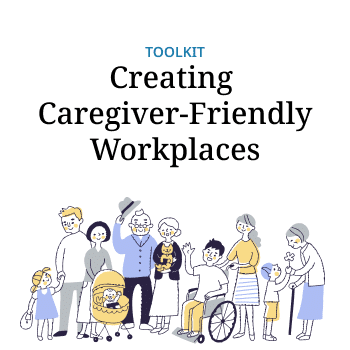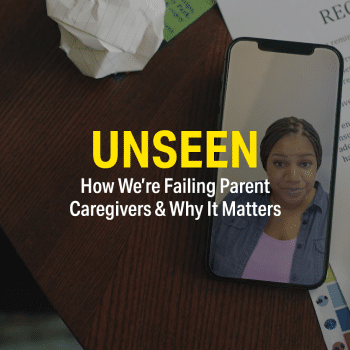Understand the caregiving status of your employees.
Conduct regular surveys, one-on-one meetings or focus groups with employees to get a clear picture of their caregiving responsibilities. Include examples of caregiving tasks so that even those who don’t see themselves as caregivers recognize their role. Be sure to allow for anonymous responses, as many employees may not be comfortable disclosing that they are a caregiver.
Remember, an employee’s caregiving status can change suddenly and frequently, so regular check-ins are required for an accurate measure.
Use the term “caregiver” in your materials.
Audit your employee handbook, orientation and new hire materials and employee engagement campaigns to include content about caregiving.
Showcase executive empathy.
Prompt executives to share their own personal stories of caregiving to kick off a new caregiver support initiative. Encourage caregivers who are managers, directors or executives to guide conversations and serve as ambassadors for your culture campaign.
Form an Employee Resource Group for caregivers.
Form an Employee Resource Group for caregivers and issue an open invitation to caregivers to participate. Demonstrate commitment from leadership by including them in the group, or having them serve as executive sponsors.
Think of caregiving as an expansion of what it means to care for family.
Taking care of children is often an acceptable reason for work adjustments — and in that respect, caregiving is no different.
Add caregiver support to management training.
Make sure that the training you provide for managers includes a module on caregiving employees, how to support them and how doing so ultimately benefits the company.
Provide private spaces for employees to make personal calls during work.
Managing caregiving responsibilities often requires phone conversations about sensitive topics and personal details. Make it easy for your employees to conduct these conversations privately.
Avoid diminishing employee caregiver responsibility or opportunity.
Don’t say…
“Let’s revisit your promotion after you’re done caregiving.”
“We reassigned your client to Alex since you’re taking a lot of time off to care for your wife.”
Instead, try…
“What can we do to make it possible for you to achieve the promotion while you’re caregiving?”
“How can we keep you on this client account while you’re taking care of your wife?”
Consider caregiver support as part of your DEI strategy.
Given that non-white female and LGBTQ male employees are more likely to be caregivers, support for employee caregivers will also improve working conditions for the people that make your company diverse.






